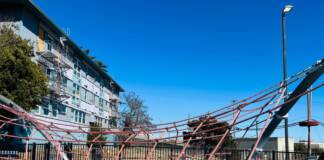
Meet Shaka Zulu and George Katsiaficas, learn more, get involved: Thursday, Oct. 17, 7 p.m., at Freedom Archives, 522 Valencia St., San Francisco
Beginning in 1966, the Black Panther Party emerged as one of the most revolutionary organizations in the United States in the 20th century. Paying a high cost for their leadership of a multi-racial revolutionary uprising, the Panthers developed a vision for an alternative society that remains relevant to this day.
The New Afrikan Black Panther Party developed first from within the prisons of Amerika and is now building programs and organization in communities across the country. Their concept of a United Panther Movement embraces all peoples and seeks to build a movement that can thoroughly transform society. We seek to open a discussion about the ongoing possibilities and challenges of the continuing quest for peace and justice.
Meet Shaka Zulu and George Katsiaficas, learn more, get involved: Thursday, Oct. 17, 7 p.m., at Freedom Archives, 522 Valencia St., San Francisco.
Shaka Zulu, chair of the New Afrikan Black Panther Party, was recently released from prison and is on a national tour from his base in Newark, New Jersey. The NABPP (formerly with the added subtitle, “Prison Chapter”) is the party whose Minister of Defense is Kevin Rashid Johnson, a prolific author and talented revolutionary artist. He designed the logo for the California prisoners’ hunger strike against isolation and solitary confinement.

Since Shaka Zulu’s release, the NABPP has been organizing “No Prison Fridays” protests in Newark. These mass rallies, which quickly grew from a few dozen to several hundred protesters from local communities, began in opposition to official plans to build a youth prison in Newark on South Orange Avenue, a couple of blocks from Westside High School.
The NABPP is building the United Panther Movement nationally involving parallel constellations of activists from all races and genders. The NABPP and UPM are organizing Serve the People programs to assist communities in developing their own resources and labor power toward restoring them as base areas of cultural, political and economic revolution.
George Katsiaficas graduated from MIT in 1970 while in solitary confinement after being convicted of “disturbing a school” for organizing anti-war protests. He moved to California, where he was part of a deep network of countercultural counter-institutions during the 1970s in the Ocean Beach area of San Diego. He was long active against the CIA and for Palestinian self-determination. A student of Herbert Marcuse, he has authored books on “the global imagination of 1968” as well as European autonomous movements.
Together with Kathleen Cleaver, he edited “Liberation, Imagination and the Black Panther Party.” His two-volume “Asia’s Unknown Uprisings” documents an Asian wave that overthrew eight dictatorships in six years. For years, he taught in Boston and was a research affiliate at Harvard in both Korean studies and European studies. His website is here.




